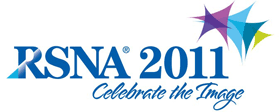
Abstract Archives of the RSNA, 2011
Martin Stenzel MD, Presenter: Nothing to Disclose
Hans Joachim Mentzel MD, Abstract Co-Author: Research Consultant, Bayer AG Novartis, GE, Falk
Research Consultant, Novartis AG
Research Consultant, General Electric Company
Research Consultant, Falk
Research grant, Novartis AG
Research grant, BeamMed Ltd
The purpose of the study was to assess the additional value and diagnostic accuracy of sonography of the thorax in cases of suspected pneumonia in children.
50 children (28 male, 22 female; 1 2/12 - 13 11/12 years, average 5 1/12 years) were examined at least once (3 children had two examinations).
In a standardised examination both lungs were evaluated for 1. pulmonary consolidations, 2. aerobronchograms, 3. hyperaemia, 4. pleural effusions, 5. pleural thickening. Ultrasound machines used: ZONARE z.one ultra (C 9-3 probe), Philips HD11 XE, iU22 (C 9-4, C 8-5 probe).
At the same day (in 8 examinations within 24 hours) an a.p. or p.a. X-ray of the thorax was taken (AGFA DX-S, MUSICA/MUSICA2).
Results of both imaging methods were compared by two experienced paediatric radiologists.
Ultrasound demonstrated consolidations in 36/106 (34%; 21/15 right/left lung) lungs.
X-ray demonstrated peripheral consolidations in 31/106 (29%; 16/15 right/left lung) lungs. In 19 lungs the consolidations were presumed to be exclusively centrally located.
Compared to X-ray, sonography showed additional information in 18 hemithoraces: effusion, additional consolidations, proportion of effusion vs. consolidation, "unexplained" mediastinal shift, pleural thickening.
4 of the peripherally located consolidations were not detected by ultrasound.
1. In suspected pneumonia, radiation-free imaging methods are to be preferred, especially in children.
2. Peripherally located pulmonary consolidations are detected accurately by ultrasound.
3. Ultrasound gives additional information over X-ray.
Sonography is a very useful additional imaging modality in childhood pneumonia.
Stenzel, M,
Mentzel, H,
Value of B-mode and Color-coded Sonography in Childhood Pneumonia. Radiological Society of North America 2011 Scientific Assembly and Annual Meeting, November 26 - December 2, 2011 ,Chicago IL.
http://archive.rsna.org/2011/11012719.html

